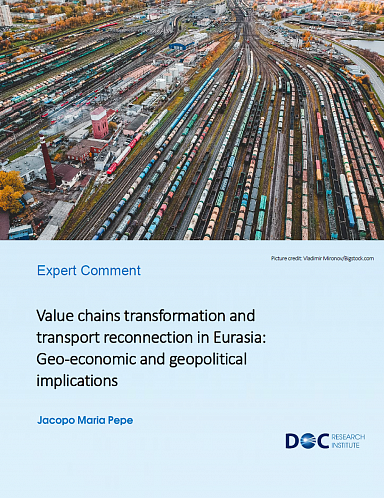The key to successful and sustainable integration of the transport space of continental Eurasia is less the ongoing expansion of transcontinental transit and more the participation in intra-regional and transregional cross-border value chains. This is particularly true for the common economic and transport space of the EAEU, which represents the most advanced attempt to create a normative and regulatory unified framework for cross-border trade and transport across continental Eurasia since the collapse of the Soviet Union.
The economic complementarities between continental Eurasia on one side and the two manufacturing blocks at the edges of the supercontinent, Europe and Asia, clearly represent the greatest asset for larger participation in global value chains via greater transport integration and logistic interoperability. This is even more true as the transformation in the geographic locations of economic activities and production networks, which has occurred within Europe (EU Enlargement) and China (Central and Western Development Strategy) throughout the past 15 years, has shortened the distance between Asian and European/German production networks and brought producers and consumers closer together across the continent.
This unprecedented transformation has given continental Eurasia, for the first time since the collapse of the Soviet Union, the chance to integrate into advanced value chains: since 2008, and particularly since the launch of the BRI in 2013, there has been increasing demand for transcontinental East—West rail services across three main routes, two of which cross the entire territory of the EAEU. This has, for its part, certainly offered a grand incentive for establishing the Eurasian custom union — and later the EAEU — and for harmonizing tariffs across the Eurasian transport space.
These efforts have led to the creation of a more coordinated and functioning cross-border transport system, first and foremost among members of the EAEU (i. e., tariff harmonization, container-market liberalization, traction interoperability, joint rolling stock use, and coordination of integrated logistics services). However, the development of transit corridors across this space presents limits, both in terms of few positive spillover effects on the development of intra-regional domestic value and supply chains and in a lack of further integration into Europe’s value chains — to date the biggest source of FDI and largest trade partner of continental Eurasia.




